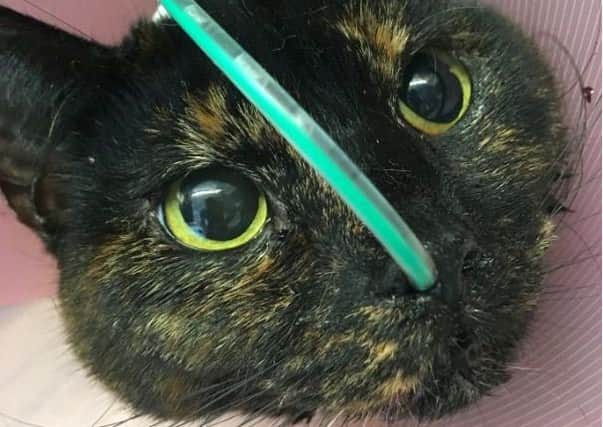Yorkshire vet Julian Norton gets to work on cat with horrifically cut tongue


“How can I help?” I asked, as the basket was lifted onto the consulting room table.
“Well. There’s blood everywhere,” explained the gentleman, “It seems to be coming from her mouth, but I’m not sure. The hall and living room carpet are a complete mess. I’m looking after her for my daughter, who’s on holiday.”
Advertisement
Hide AdAdvertisement
Hide AdI have come to learn that, where cats and dogs are concerned, a little bit of blood goes a long way. Minor cuts or scrapes can seem very much more serious than they actually are. With this in mind, I was not expecting the sight that presented itself when I opened the lid of the basket.
The base of the box was completely covered in blood – just like a tap had been left dripping all night. A lot of blood goes even further than a little. The situation was rather urgent.
I quickly found the problem. Or, at least, part of the problem. There was an inch-long laceration on the top of the tongue. I suspected the tuna-stained lid of a tin can. I’ve seen this sort of thing many times before – tuna cans in the recycling bin, with their razor sharp edges, are an unexpected hazard to cats.
I took our patient straight to theatre and, under anaesthetic, started to examine the injury in more detail. To my horror, there was a similar sized cut through the underside of the tongue. The tissue left connecting the top to the bottom was only about three millimetres wide. The bulk of the cat’s tongue was hanging on by a thread.
Advertisement
Hide AdAdvertisement
Hide AdA debate ensued amongst all the nearby vets about whether this horrendous injury would be possible to repair. There was a very real possibility that both the nerves and the vessels supplying the end of the tongue had been irreparably damaged but, ever the optimist, I decided that I should try to fix it. I set about cleaning the area and working out how best to suture the damaged tissue back together. After a painstaking 45 minutes, the cut edges had been re-apposed and the situation seemed immeasurably better.
The next job was to place a nasogastric tube. There was no way that the little tortoiseshell would be able to eat for at least a few days, even if the wounds started to heal as I hoped they would. Since she was still under anaesthetic, placement was relatively simple and the flexible, latex tube slid easily up her nostril and down into her stomach. I tested it by introducing a tiny amount of water, to make sure it hadn’t entered the lungs.
Advertisement
Hide AdAdvertisement
Hide AdThe tube was then anchored in place with sutures, which I attached to the top of her head. Whilst these tubes look quite intrusive, most cats actually tolerate them very well. I administered plenty of analgesic and fitted a buster collar to stop her from scratching at the tube. I put her back comfortably in her kennel and made the phone call to relay both the bad and the cautiously good news.
She was not out of the woods yet – very far from it. Yes the tongue was back together, but would it stay together? Would proper function return? There was no merit in having a tongue if it flopped, out of control and unable to lap water. Time would tell – I sensed it might be a long haul
Julian Norton’s new book, The Diary of a Yorkshire Vet, is available via www.ypbookoffer.co.uk or call 01274 735056. £11.99 each. The latest series of The Yorkshire Vet continues on Tuesday at 8pm on Channel 5.